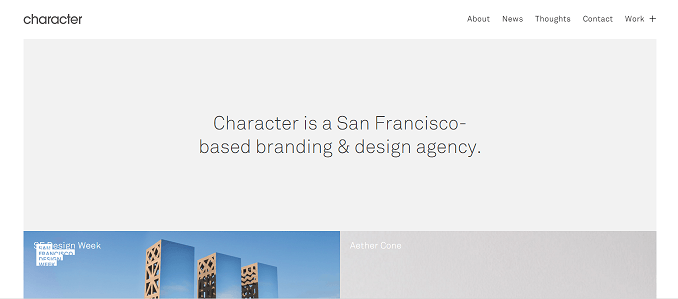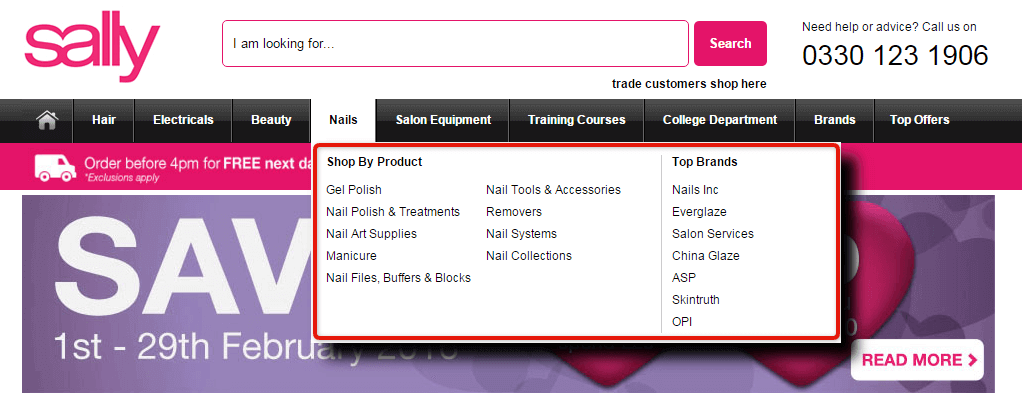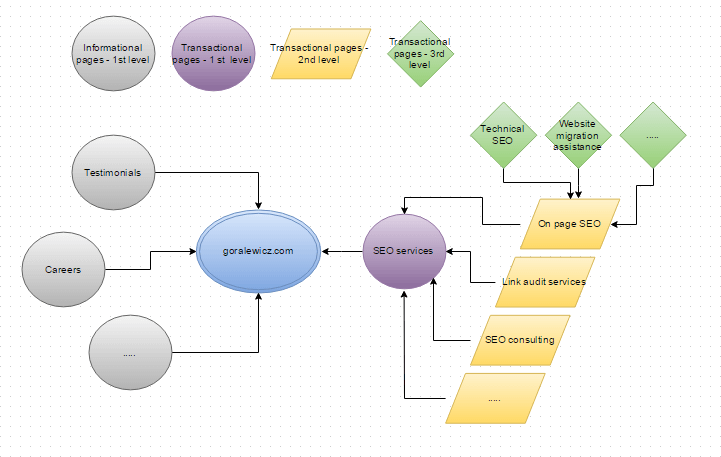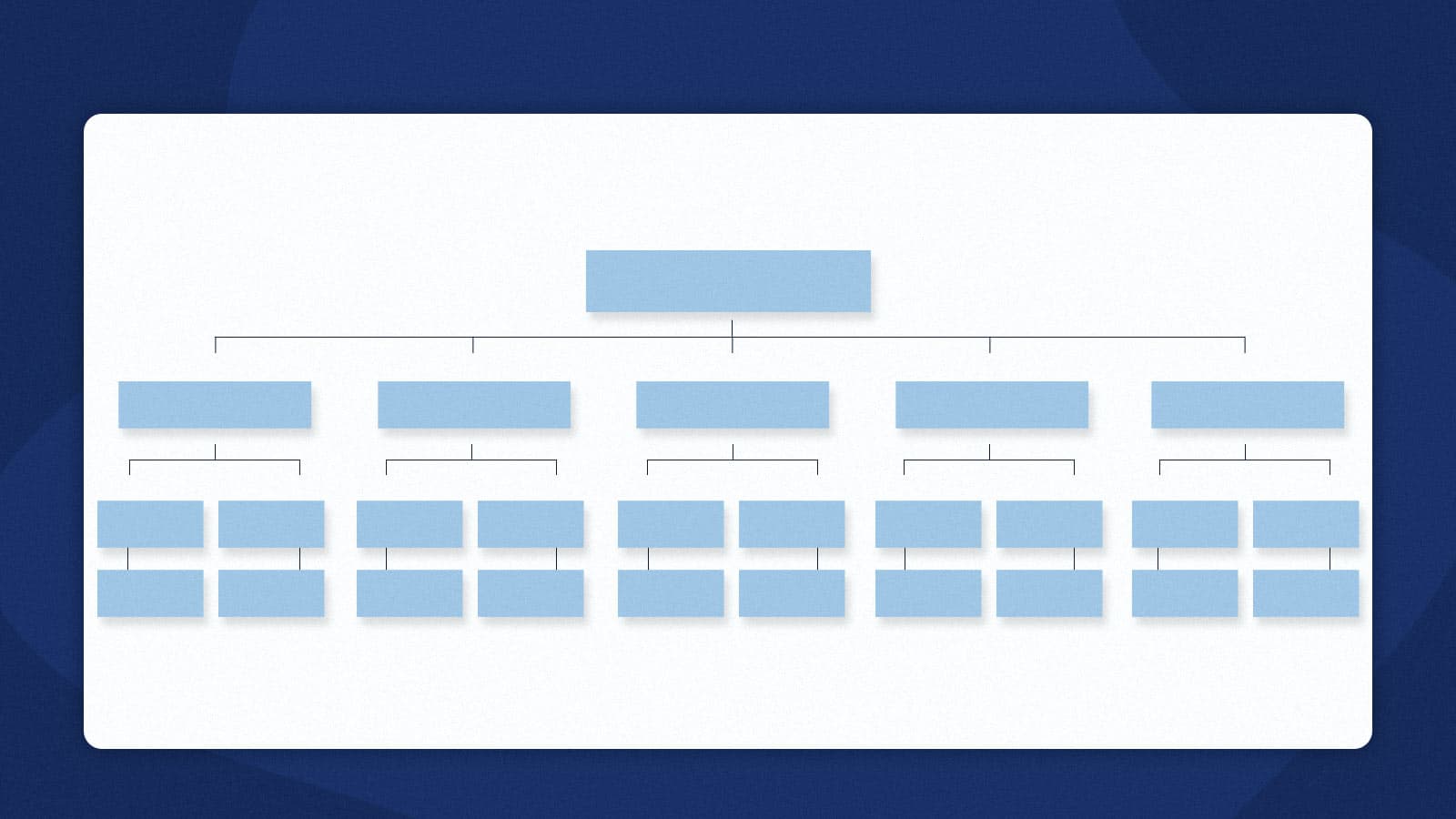Some parts of your business are best handled by yourself. You know your services and clients as nobody else does.
If you run a small website, you don’t need technical SEO experts to build proper information architecture.
This guide will walk you through the process of organizing your content within just a few hours of (fun) work.
But before taking each of those steps, you need to answer at least one question.
What is My Business About?
Take a moment to consider your brand identity. This will determine the main goal of your website.
If you are a design agency, making your website beautiful is essential. However, you want to keep it simple. The main focus is on the promotion of your portfolio. In this case, you may prefer visual rather than written communication with your clients.
If you are a health insurance agency, outside of selling insurance policies, your mission is to keep people up to date with the insurance laws, news, and top offers. Your goal is to be an authority in the industry, but mostly you want people to trust you.
Now name your business.
What comes to your mind when you think about it?
Are you a company/agency/professional/freelancer?
You should define what your business is on your homepage, About us/me page, or any substitute page of your website.

How Do People Talk about My Business, Products or Services?
Perform keyword research, but instead of starting from Google Keyword Planner, start by listening to your clients.
You can reach out to them directly, through social media, dedicated surveys — you name it.
Focus on the language they use and note the best expressions that fit your website. Then create THREE groups of these expressions:
- Concerning your business in general.
- Concerning groups of your products/services.
- Concerning specific products/services.
Now you can use Google Keyword Planner (or other tools) to play with these words. Find new expressions and see if they are popular.
Ideal keywords are the ones with a high search volume, but the competitiveness is relatively low. However, remember Rule #1 — your keywords have to be appropriate to your business/niche, and, most importantly, they have to drive traffic valuable for your business.
What is the Role of Transactional and Informational Pages?
Most professional websites consist of two different kinds of pages:
- Selling
- Informative
As a website owner, you should be aware of every page’s role in your information architecture.
You may also localize other kinds of pages, which are neither designed to sell nor inform. They are unnecessary clutter, and you should redesign or remove them.
Divide your pages into the aforementioned groups.

Their affiliation should have a great impact on their position in the structure.
Not only should your blog (if you have one) be included in the informational pages, but also “About us”, “Privacy policy”, “Shipping info” and all the other pages that are not part of your sales funnel.
Transactional pages exist to complete the main goal of your website and deserve special attention.
How Do I Categorize My Products/Services Properly?
Categorization is an extremely important step in building your website’s structure. It should make the structure easy to navigate and understand.
Its goal is to help users find their way from page A to page B through a logical sequence of clicks.
Look at the list of keywords you created to find the best fit for the main categories.
If you decide to introduce categories to your website, every product/service URL should be included in one of them. One product/service can’t belong in two categories of the same level at the same time.
Think of the category as a unique set of elements that can be further divided into subcategories.

You can also introduce categories to the informational pages.
For example, a real estate blog can contain categories like: “real estate news” and “trends in architecture”.
How Can I Visualize My Information Architecture?
This is the last step for strategic information design.
Once you have all the data gathered and categorized, you want to visualize the hierarchy of pages.
Put your homepage in the middle, then connect it with all the transactional and informational pages on the first level. After that, you can add further levels and see how big the structure actually is.
Depending on how detailed your drawing should be, you can limit your structure to categories or go all the way down to individual pages.
Here is a sample website structure using https://app.diagrams.net/:

Then What?
After completing these steps, you have a ready-to-go, actionable structure for your website.
Your next steps are to:
- Build all the landing pages from your structure or, in some cases, only rearrange the existing ones.
- Optimize all the landing pages (Meta title and description, H tags, image names, image alt tags, and if you are really tech-savvy — TF*IDF).
- Generate a new sitemap based on your new website’s structure and submit it to Google Search Console.
Here’s what you can do now: Still unsure of dropping us a line? Read how our information architecture services can help you improve your website.NEXT STEPS
Now — you are done. You’ve built your own information architecture.
More importantly, you did it like a boss!
Enjoy your new rankings and traffic, and remember to build up your karma.
You can feed a homeless puppy or simply watch our video…








